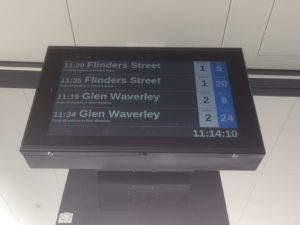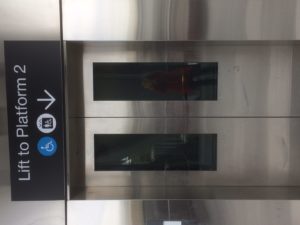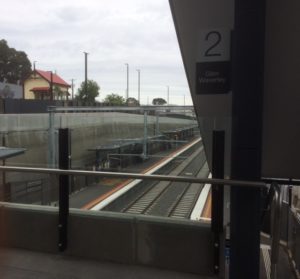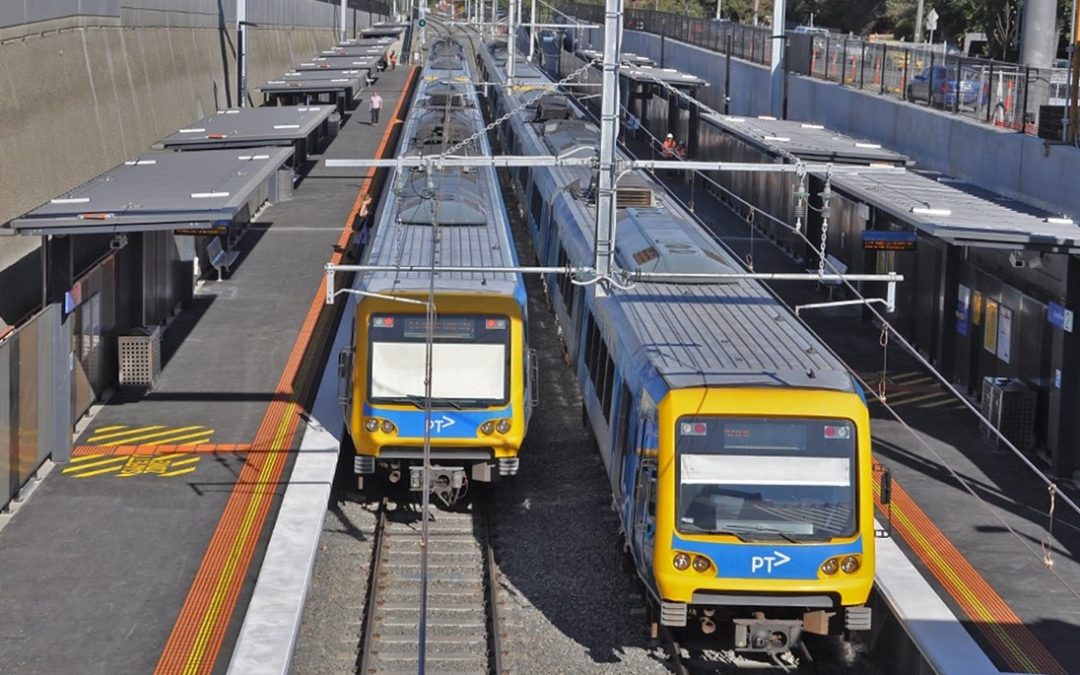Dancing Wombat’s travel training continues.
I suspect it will for many years. But this time, I wanted to start testing out train routes.Taking public transport out to Grandma Wombat involves taking a tram down the road and then a train. So when Dancing Wombat asked me recently if we were doing travel training on Sunday, the answer was yes – travel training on the train!
From knowing to doing
Like many others with ASD, my daughter has a great memory. Extracting information from that memory, however, is like separating teens from screens – challenging! She knew exactly which station we’d catch the train from, where we’d get off, and all the stations in between. She also knew where the relevant tram stops were (another benefit of all our tramping the streets together!). However, knowing and doing are quite different things. Part of the reason behind our frequent travel training is to reinforce in my daughter strategies to ensure she does get off at the right stop, such as:
- telling the tram driver her stop, or (better still)
- showing the driver in writing.
Also, she also still needs to be self-reliant to some extent, by:
- looking for landmarks out of the window
- listening for stops being announced on the tram (although they aren’t always announced, and aren’t always audible when they are) and
- checking for screen displays announcing the next stop (although they’re not always present or visible in a crowded tram – especially for a short person).
Operational!
Almost every time I think she has a strategy, route or destination down pat, something intervenes to throw her. So I almost feel that there’s no such thing as too much practice. It’s like rote learning, but not for the times tables, or the “Magic 100 words”!
My standard strategy is to travel a route with her several times, before letting her go alone. When I’m confident that she knows her stops, I see her off at home (or hide and watch her board the tram), then drive to her destination with my heart in my mouth, hoping that she’ll get off where we’ve arranged. If you’ve been following our travel training installments, you know already that it hasn’t always happened. Today, though, was stage 1 of a multi-stage process. I’d be with her every step of the way.
Thinking outside the square
Tramming to the station was easy. But when we reached the station, I was struck by just how poor the signage was for people with vision problems. The signs were high and, to my mind, the lettering was way too small. My poor girl craned her neck to look up (remember, she’s short), and struggled to read which was Platform 1 and which was Platform 2. The consequences of getting this wrong are significant.

Dancing Wombat was born with extreme myopia. Last year, she had an operation to improve her vision. It made a huge difference – she no longer needs to wear glasses all the time. But she does need them sometimes. The problem is, it’s extremely difficult to assess her vision as she struggles to look into the eye testing equipment and manage the vision tests. Unfortunately, we can’t test someone’s ability to focus under anaesthesia. So, while you might think ‘Just go and get her new glasses’, it’s not that easy.
This year alone, Dancing Wombat has had her eyes tested three times, each time with little success. We’re painfully aware that she sometimes struggles to see – especially where there’s dim light, or small lettering. But we feel absolutely powerless to do anything about it. Except for trying yet another optometrist with, perhaps, a different set of testing tools. I was forcibly reminded of this struggle while she was squinting up, trying to make out the numbers.
I didn’t want to read them out to her. There must be something at eye height somewhere, I thought. Something that would indicate which platform was which. These platforms were below ground level. While there was a number at the top of the steps, she’d just about be tumbling down the steps before she’d seen it. Aha! There were lifts. On the doors was a sign showing which platform they led to. That was easier. Down we went.

On the train at last
I’m a big fan of train travel. Especially when you get a seat! I realised also that train travel might be comparatively easier for special needs people, provided they could negotiate the hustle and bustle of larger stations. Unlike trams, trains stop at every stop (with the exception of expresses, of course). And the stops are very obvious. Although I still have a gripe about the size of the lettering on the station platforms. Too small, and sometimes, just not very clear visually, with small lettering on narrow signs. Call me old-fashioned, but I have a memory of the – yep – old fashioned keyhole signs with their large black letters on a white background seeming larger and clearer than the current Melbourne signs. Then again, maybe it’s just an optical illusion…
The train trip was uneventful. The big learning experience here was teaching about arriving on one platform and departing on the other – and how to get to the other. At some stations, there’s a bridge over the railway. Here, there was an underpass. Again, Dancing Wombat needed to look for the signs of where to go. So, while some of the guesswork is taken out of where and whether the train will stop, she still needs to:
- be aware of what to do (ie: get off at X station, change platforms to come home), and
- work out how to do it (ie: how to identify the correct station/platform/path to the platform)
So, no relaxing just yet! Apart from when we met Grandma Wombat for that iced chocolate…
Tramming home
Once Dancing Wombat had found her way out of the station, she needed to work out how to get across to the tram stop, which was in the middle of a busy main road, over a freeway. There was a single central platform, so she needed to work out which side she needed to be on for going home. There always seems to be something new to learn.
We rehearsed her request to the driver several times, until I was sure that she could speak clearly enough: “Seymour Grove is my stop. Could you tell me when to get off, please.”
Soon enough, she was saying it for real. Second time around, the driver understood her. As Dancing Wombat moved down the tram, the driver beckoned me back. Oh-oh. Surely I’d done nothing wrong? I went up to the window.
“Your daughter?” he asked me. I nodded.
“I have two of those,” he said.
Ahh. That one brief comment contained a story of grief, challenges, love, understanding and hope. And it made me see Dancing Wombat’s travel training from a different perspective.
First, here was someone who would be patient with my girl. Not just because he’d received training, but because he too had special needs children. Secondly, as a driver and a special needs parent, he’d have a deep understanding of the value of public transport. Third, I like to think that seeing other special needs kids developing their independence through travel training might encourage him with his own children.

When I snapped this picture later on, the signs looked bigger than I’d remembered. Without Dancing Wombat there, it was harder to recapture her perspective. Interesting.
Being role models for the public
It struck me today that I was a role model for two audiences. The first was my daughter. However, and just as significantly, all of us parents and carers out there doing similar things are also modelling to the general public that special needs people exist and engage in the community. That they like to be out, about and involved. That they shouldn’t be shut away in a limited world of special needs people, limited by narrow conceptions of what they can (or should) do. And as for the public – well, after all, it takes a village to raise a child.
Until next time, Happy Wombatting!


